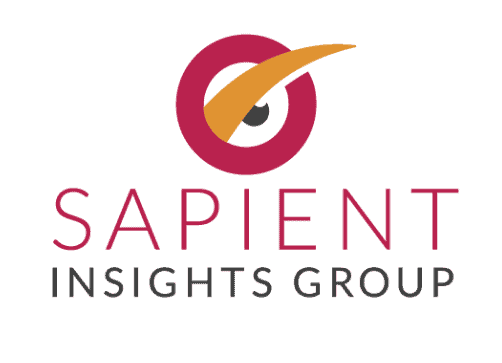The way organizations approach careers, skills, and pay is evolving rapidly. In our latest podcast, HR executive Bob Hanley and consultant Kim Nugent reflect on their experiences executing a broadband, competency-based pay pilot at Abbott Laboratories years ago. They discuss what’s changed—and what’s remained the same—when it comes to job leveling, talent development, internal mobility, and compensation strategy.
Why does this work matter today? Beyond staying competitive, companies must ensure employees have clear pathways for growth—both for retention and to drive business outcomes. Bob and Kim also explore, with Teri, how advancements in HR technology can support better decision-making in these areas—but only up to a point. The human element remains critical.
Skills, Technology, and the Link to Pay
The skills landscape is shifting, fueled by automation, AI, and changing workforce dynamics. Sapient Insights Group research shows that internal talent marketplaces are accelerating across industries. While technology has made it easier to identify and track skills, real transformation happens when organizations align talent strategies with business needs—and when stakeholders work together rather than in silos.
Simply implementing a new platform won’t guarantee mobility, lateral moves, strong developmental feedback, or equitable promotions. The unwritten rules of workplace culture still apply: managers’ biases, informal networks, and unspoken norms all influence who gets access to opportunities. If organizations want to make a measurable difference, they must go beyond software and take deliberate steps to foster transparency and inclusivity in career development.
Driving Adoption: Turning Strategy into Action
Adopting a skills-based approach to careers and pay isn’t just about rolling out new technology—it’s about changing behaviors and mindsets. Many organizations struggle to move beyond implementation to real adoption. Here’s what it takes to make it work:
- Work together, vs. in silos, using a design playbook
For a skills intervention to make a measurable business difference, it is crucial for key stakeholders—business executives, talent/OD professionals, compensation experts, and IT professionals—to work together rather than in silos.
For example, you need to make philosophical decisions about information you truly need to move and reward talent (as compensation levels and incentive eligibility often drive how people size up an opportunity). You need to confirm design principles about development, such as: Can internal talent acquisition reach out to a solid internal candidate for an internal role who hasn’t posted for it, but would be a terrific fit?
- Engage Managers Early and Often
No system will succeed unless managers actively use it to assess talent, provide employees with meaningful feedback, and make decisions. Equip them with training, tools, and clear expectations for how skills and mobility should factor into promotions, team structuring, and project assignments.
- Make Skills a Shared Language
Employees need to understand how their skills align with career growth. Define key skills transparently, embed them into job leveling frameworks, tie them to digital learning and experiential opportunities, and ensure they’re reflected in performance and compensation discussions. Most of all, how strong are manager and employee feedback skills, when it comes to asking for and providing feedback against the skills and tips for career development and advancement.
- Remove Barriers to Mobility
A skills-based system only works if employees feel empowered to move. Address policies or cultural norms that limit internal hiring, rethink rigid job structures, and ensure compensation supports—not hinders—lateral moves. Work with executives around their own skills and biases around talent and mobility and ensure they model desired behaviors.
- Measure and Adjust
Track adoption metrics beyond logins and partner with your workforce analytics experts to ensure metrics are creating the desired business and talent outcomes. Are managers making better talent decisions? Are employees seeing more career opportunities? Do you have ready-now talent in critical, emerging skill areas? What sequencing of project experiences or job moves will help build capabilities in areas critical to the business’ future success? Use this data to refine the process continuously.
The AI Effect: How Skills Will Evolve in the Next 1-3 Years
We can’t create a static framework. AI is rapidly transforming the skills landscape—both by changing the nature of work itself and by redefining how organizations evaluate and develop talent. In the next few years, we expect to see:
- Shifting Skill Priorities – As automation takes over routine tasks, demand for uniquely human skills like critical thinking, problem-solving, and emotional intelligence will rise. Organizations need to map how AI will impact their workforce and proactively upskill employees for emerging roles.
- AI as a Career Development Tool – AI-powered learning platforms are making personalized career growth a reality. From intelligent coaching to automated skill assessments, these technologies can help employees identify strengths and close skill gaps faster than traditional methods.
- New Challenges in Pay & Equity – As AI-driven skills models become more common, companies must ensure they don’t reinforce bias. How organizations define, measure, and reward skills will require ongoing scrutiny to maintain fairness and transparency.
For organizations building a skills-based workforce, the takeaway is clear: AI will be a catalyst for change, but it won’t replace the need for intentional strategy and leadership and the need for real human communication and feedback skills.
Companies that prepare now—by integrating AI into skills planning, investing in reskilling, and ensuring human oversight—will be best positioned to thrive.
Final Thought: Implementing a skills-based approach is a process, not a one-time initiative, and the board is moving. Success requires intentional effort from HR, managers, and leadership to embed skills-based thinking into daily work. Technology can enable the shift, but people must drive it.


